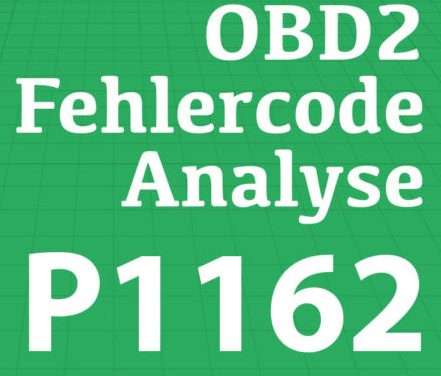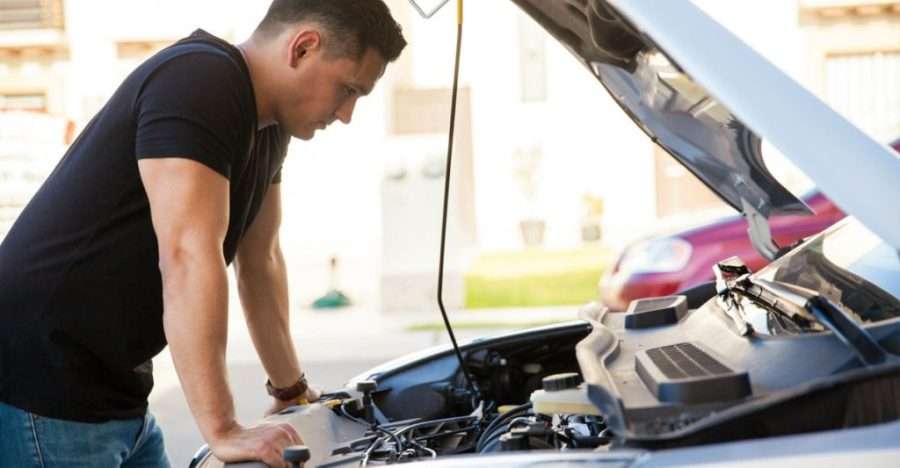
P1162 (Volkswagen, Audi, Skoda, Seat) Fuel temperature sensor - short circuit to ground
Content
P1162 – OBD-II Trouble Code Technical Description
Trouble code P1161 indicates a short circuit to ground in the fuel temperature sensor circuit in Volkswagen, Audi, Skoda, and Seat vehicles.
What does the fault code mean P1162?
Trouble code P1162 indicates a problem with the fuel temperature sensor in the vehicle's fuel injection system. This sensor is responsible for measuring the temperature of the fuel entering the engine. During normal engine operation, the control system uses data from this sensor to optimize fuel and air mixing, which affects the efficiency and environmental performance of the engine. Trouble code P1162 indicates that there is a short circuit in the fuel temperature sensor or wiring, which prevents fuel temperature data from being properly communicated to the engine management system and can affect engine performance, fuel consumption and emissions, which can ultimately lead to to deterioration of engine performance and increased environmental pollution.

Possible reasons
Possible reasons for DTC P1162:
- Fuel temperature sensor malfunction: The sensor itself may become damaged or fail due to wear, moisture, chemicals, or other factors. This may cause a short to ground and incorrect fuel temperature readings.
- Wiring problems: Opens, shorts or damage to the wiring connecting the fuel temperature sensor to the engine management system can also cause P1162. This may be caused by mechanical damage to the wiring, corrosion of the contacts, or improper installation.
- Faults in the grounding system: Improper grounding of the fuel temperature sensor or other components in the system can result in a short to ground and a P1162 code.
- Problems with the engine controller (ECU): Imperfections in the engine controller software or its malfunction can also cause the P1162 code to appear. It is necessary to check the operation of the ECU and, if necessary, update or replace it.
- Damage to the sensor or its environment: Mechanical damage or external factors such as shock or vibration can damage the fuel temperature sensor or its environment, causing a short circuit and P1162.
To accurately determine the cause of error P1162, it is recommended to conduct a comprehensive diagnosis using specialized tools and equipment.
What are the symptoms of a fault code? P1162?
Symptoms for DTC P1162 may include the following:
- Deterioration in engine performance: Damage or malfunction of the fuel temperature sensor may result in poor engine performance. This may manifest itself as loss of power, rough idling, or poor throttle response.
- Increased fuel consumption: Incorrect data from the fuel temperature sensor can result in improper mixing of fuel and air, which can increase the vehicle's fuel consumption.
- Unstable idle: A damaged or faulty fuel temperature sensor can cause the engine to idle rough. This may manifest itself as a shaking or rough idling of the engine.
- Engine error on dashboard: When P1162 is detected by the engine management system, a warning light on the instrument panel may be activated. This usually results in a flashing or steady Check Engine or Error Engine light.
- Unstable engine operation under various conditions: A problem with the fuel temperature sensor can occur under various engine operating conditions, such as cold starts, idling, or under heavy loads.
- Increased emissions of harmful substances: Improper mixing of fuel and air due to a faulty fuel temperature sensor can result in increased emissions of harmful substances, which can affect the vehicle's environmental performance.
Detecting any of these symptoms, especially when the dashboard warning lights are activated, requires immediate attention and diagnosis to correct the problem.
How to diagnose a fault code P1162?
The following steps are recommended to diagnose DTC P1162:
- Reading the error code: Use a diagnostic scan tool to read the error code from the engine management system. Make sure that the P1162 error code is actually present in the engine control unit memory.
- Visual inspection of the fuel temperature sensor and its wiring: Inspect the fuel temperature sensor and wiring for visible damage, corrosion, or disconnection. Check the condition of the sensor contacts and connectors.
- Checking the resistance of the fuel temperature sensor: Use a multimeter to check the resistance of the fuel temperature sensor at different temperatures. Compare the measured values to the manufacturer's recommended specifications.
- Checking the power and ground circuit: Check the fuel temperature sensor power and ground circuit for voltage at the appropriate terminals. Make sure the electrical connections are good and there are no breaks in the circuit.
- Checking the fuel temperature sensor signal: Check that the fuel temperature sensor is sending correct data to the engine management system. Use a diagnostic scanner or oscilloscope to compare the sensor signal to the expected value at different temperatures.
- Additional diagnostics of other systems: Since the problem may not only be caused by the fuel temperature sensor, but also by other components of the fuel injection system or engine management system, it is recommended that additional diagnostics be performed on other components.
- Checking the engine controller (ECU): If all other components have checked and are working properly, but P1162 continues to appear, additional engine controller (ECU) diagnostics may be required to detect possible problems or inconsistencies.
After diagnosing and identifying the cause of error P1162, you can begin the necessary repairs or replacement of parts. If you are not experienced in automotive repair, it is recommended that you contact a qualified auto mechanic or service center for professional assistance.
Diagnostic errors
When diagnosing DTC P1162, you may experience the following errors or difficulties:
- Misinterpretation of symptoms: Some symptoms may be caused by problems other than the fuel temperature sensor. Misinterpretation of symptoms can lead to misdiagnosis and replacement of unnecessary parts.
- Insufficient wiring check: Incorrect diagnosis may be due to insufficient testing of the wiring, connections and connectors associated with the fuel temperature sensor. Incorrect or superficial inspection of the wiring may result in missing the cause of the problem.
- Insufficient testing of other components: Trouble code P1162 can be caused not only by the fuel temperature sensor, but also by other problems in the fuel injection system or engine management system. Failure to sufficiently check other components may result in misdiagnosis and replacement of unnecessary parts.
- Lack of specialized equipment: To fully diagnose and repair an engine management system, specialized equipment such as a diagnostic scanner or oscilloscope may be required. The lack of such equipment can make accurate diagnosis difficult.
- Incorrect interpretation of error code: Incorrect interpretation of error code P1162 or other error codes may lead to incorrect diagnosis and repair. It is important to correctly understand the meaning of the error code and use it to correctly determine the cause of the malfunction.
To successfully diagnose and resolve the P1162 code, it is important to have good knowledge of automotive diagnostics, experience with engine management systems, and access to the appropriate equipment.
How serious is the fault code? P1162?
Trouble code P1162, although not safety critical, can have serious consequences on engine performance and efficiency:
- Impact on performance: Incorrect fuel temperature readings can result in improper fuel/air mixing, which can reduce engine performance. This may result in poor throttle response, loss of power, and rough idling.
- Increased fuel consumption: A malfunctioning fuel temperature sensor can result in suboptimal fuel combustion, which can increase the vehicle's fuel economy.
- Environmental consequences: Improper mixing of fuel and air can lead to increased emissions of harmful substances in the exhaust gases, which will negatively affect the environmental performance of the vehicle and the environment.
- Risk of additional damage: If the malfunction is not corrected promptly, it may cause further damage to other components of the fuel injection system or engine management system.
Although the P1162 code is not urgent and does not require an immediate response, it still requires attention and a timely solution. It is recommended to diagnose and eliminate the cause of the error as soon as possible to avoid additional problems and ensure normal engine operation. If you do not have experience in automotive repair, it is best to contact a qualified auto mechanic or service center for diagnosis and repair.
What repair will help eliminate the code? P1162?
Troubleshooting the P1162 trouble code may include the following:
- Replacing the fuel temperature sensor: If the fuel temperature sensor fails or gives incorrect readings due to a short circuit to ground, it should be replaced with a new one.
- Checking and updating wiring: Check the wiring, connections and connectors associated with the fuel temperature sensor. Replace damaged wires, repair any corrosion or damage, and ensure proper connections.
- Grounding check: Check the grounding of the fuel temperature sensor and make sure it is working properly. A ground fault may result in a short circuit to ground.
- Diagnostics and software update (if necessary): Check the engine controller (ECU) software. In some cases, the problem may be due to software bugs, which can be fixed by updating the software.
- Additional diagnostics of the fuel injection system: If the problem continues to occur after replacing the sensor, there may be other problems in the fuel injection system that also need to be diagnosed and repaired.
After repairing and replacing faulty parts, it is recommended to test and clear the error code from the memory of the engine control unit using a diagnostic scanner. If you do not have experience in automotive repairs, it is recommended that you contact an experienced auto mechanic or service center for professional assistance.

